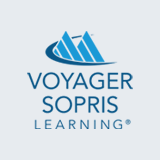High Fidelity for High Technology
Here’s the most excellent example of stating the obvious in the history of educational research. When an intervention is implemented with high fidelity, it is more effective than when it is implemented with low fidelity. Really, it’s that simple … and obvious.
So, what is this fidelity of implementation thing? Simply put, fidelity of implementation describes the extent to which delivery of an instructional practice adheres to the protocol on which it was developed or field tested. Or as my father liked to say when I was fiddling with assembling models as a kid, “Do it the way the instructions say.”
Technology-based Interventions
Now, I know some of you are out there saying, “Don’t tell me how to teach my kids.” I’m pretty sure about this because in every conference session or workshop in which I’ve discussed fidelity, someone has said this ... sometimes louder than others. But there is always someone else who says kindly, “Let him finish.”
Fidelity is not mindless adherence. Teachers are expected to adapt instructional practices to match the needs of their students, their own experiences, and the other resources that are available to students in and out of school. This is especially true with technology-based interventions because there are so many factors that affect students’ access to technology out of school in terms of frequency and quality.
Wait, there’s more. When teachers adapt an intervention, they have to do so with fidelity. Teachers know their students, and they know the processes and materials that constitute instruction. They are perfectly capable of adapting technology to match the circumstances of a given student. But once the technology has been adapted, it should be implemented with fidelity. The only way that the adaptation will accomplish the goals for which it was intended is to implement it in a meaningful way and evaluate its effectiveness.
Overcoming Resistance to Fidelity
There is no question that resistance is one of the most common barriers to fidelity of implementation. But I have discovered that much of this resistance can be overcome with a little background about fidelity in other fields. Consider the field of medicine. A recent fidelity innovation produced one of the most dramatic outcomes in the history of medicine. Here’s the opening paragraph. “Sticks and stones may break your bones—but if you need surgery, the right words used in the operating room can be more powerful than many drugs. New research published today in the New England Journal of Medicine found that when surgical teams heeded a simple checklist—as pilots do before takeoff—patient-mortality rates were cut nearly in half and complications fell by more than a third.
Here’s another example: Remember the Miracle on the Hudson? In January 2009, a plane carrying 155 passengers and crew members ditched in New York’s Hudson River. No one was seriously injured because the pilot, crew, passengers, rescue personnel, and nearby ferry crews all implemented their protocols with great fidelity.
Resistance is not the only barrier to fidelity. We face many other challenges to fidelity in education. Here’s a short list:
- Attendance
- Motivation
- Access to technology
- Disruptive behavior
- Lack of support from administration and staff
- Insufficient training of teachers and students
- Inconsistency with school’s philosophy and curriculum
- Type of software, content, purpose, where installed
- Inappropriate pattern of use
- Individual student differences
Technology in the Classroom
You may have seen one or more reports in recent years questioning the effectiveness of using technology in the classroom. In virtually every case, there is no mention of fidelity of implementation as an intervening variable. These reports should certainly mention the level of fidelity, but they don’t. Here’s a quote that states the rationale clearly. “The fidelity of technology integration in schools varies tremendously. Unfortunately, such fidelity is often neither tracked nor reported in research studies, translating into research findings for specific interventions that vary considerably across sites, with such variations left unexplained.” (p. 16) See the article here
In a piece in Edweek, I said something similar but much less elegantly: “In looking at these complex evaluation studies, it’s almost like no one looks at things like how many of the kids show up ... The analogy in medicine, he said, might be to evaluate a drug that patients don’t take as prescribed. ‘‘If it doesn’t work,’ he added, ‘what does that say about the medication?’” See the article here
Innovative software blended with the personal touch of a caring teacher offers an excellent opportunity to monitor fidelity of implementation. Great classroom software will prompt the teacher when a little quality time with a student will be helpful. In addition, an efficient and thorough reporting system will help the teacher determine if a student is receiving the technology in the right “dosage.”
This brings us to the big idea. The simplest and most effective approach to fidelity of implementation with technology is monitoring student access and progress. Be sure the technology is appropriate for the needs of a given student and that it is being used by the student in the way it was intended.
If there have been adaptations, they should be used consistently and documented simply. The technology should also have a function that allows the teacher to recognize the specific outcomes that are anticipated and how progress is being measured. It’s not that complicated, it doesn’t take a whole lot of time (just a few minutes a week), and the payoff for students is enormous.


